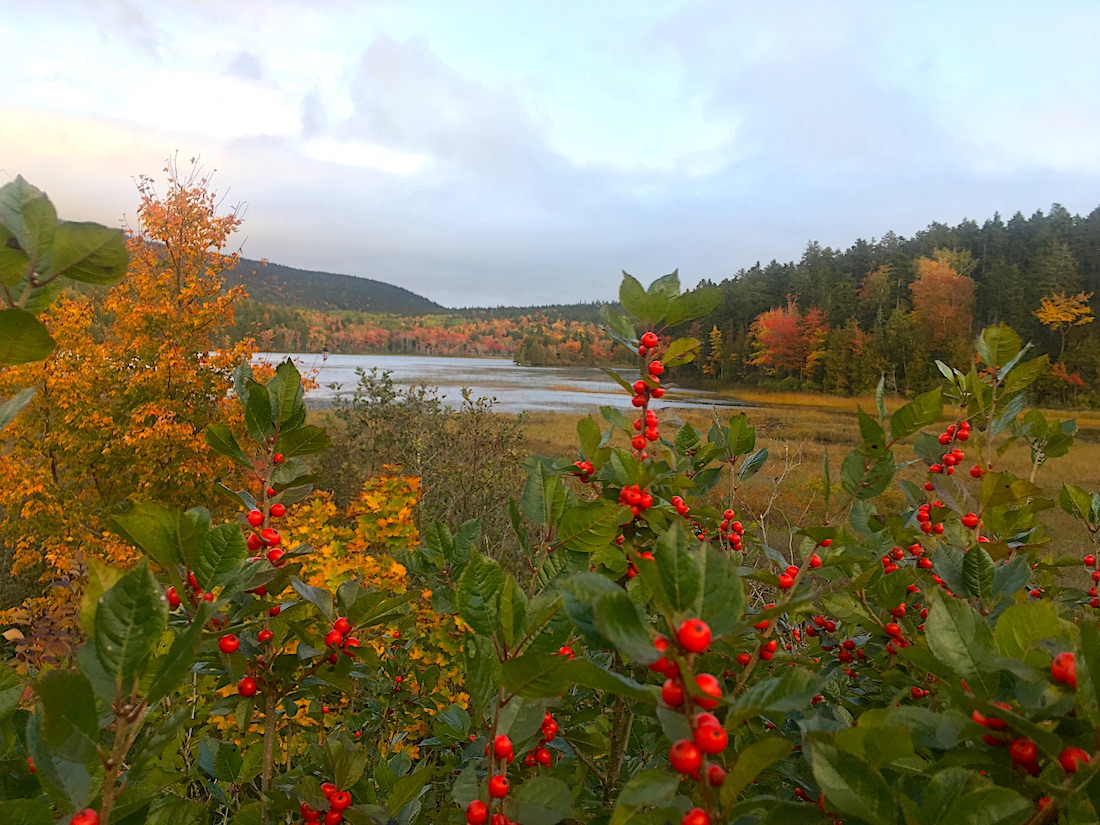Thanks for your support! If you make a purchase using our links in this article, we may make a commission. And, as an Amazon Associate, I earn from qualifying purchases. See the full disclosure here.
From mountaintops to coral reefs, the National Parks of the East Coast offer a wide variety of landscapes, plants, and animals. Our guide to the 8 Best National Parks on the East Coast will tell you everything you need to know about visiting these national treasures. The 8 Best National Parks on the East Coast are:
- Acadia National Park
- Shenandoah National Park
- Great Smoky Mountains National Park
- Congaree National Park
- Mammoth Cave National Park
- Biscayne National Park
- Everglades National Park
- Dry Tortugas National Park
The East Coast is home to many outstanding National Parks that deserve a visit. For visitors living along the East Coast, these National Parks are easy to visit and explore. Visitors from the West Coast will be amazed at the diversity found in the 8 Best National Parks on the East Coast.
1. Acadia National Park
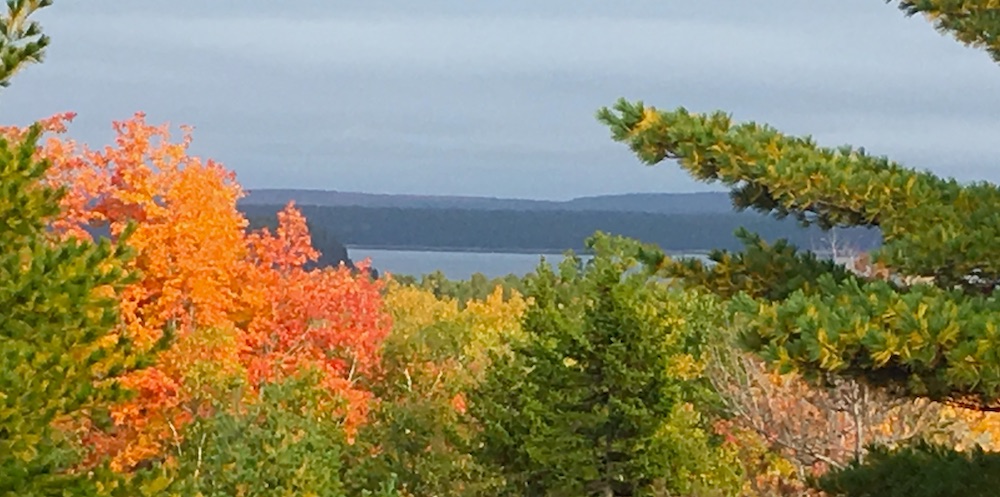
Located along the rocky coast of Maine, Acadia National Park is known as the Crown Jewel of the North Atlantic Coast. At Acadia, visitors can explore rocky coastal shores, hike miles of trails, or drive through some of the most beautiful mountains and coastlines in the country.
Some of them can’t miss sites in Acadia National Park include the 2-mile Ocean Path trail, an easy walking path along the shore. Cadillac Mountain, which is the highest point in the park, is another stop to include on your trip. Bass Harbor Head Lighthouse is a popular place to view the ocean and take great photographs. Thunder Hole is a small rocky inlet along the shore that has a unique feature. When waves come crashing in, thunder-like roar booms along the coast. Thunder Hole is one of the most popular spots in the park and worth a visit.
Popular activities in Acadia include hiking, exploring the shoreline, boat cruises, biking, and ranger programs. The park is home to puffins, peregrine falcons, seals, whales, bears, and moose. Many private tour companies operate boats that will take you offshore. Here you will have the best chance of viewing the puffins, whales, and seals. Moose and bears live in the park, but visitors rarely see them. To spot these animals, consider visiting outside of the peak season and head to the less crowded backcountry areas of the park.
The National Park Service offers many excellent ranger programs at Acadia National Park. Programs include ranger-led boat tours, bike tours, guided walks and evening programs under the stars.
Acadia National Park Visitor Info
Acadia National Park welcomes over 3.5 million visitors per year, making it one of the most visited national parks. The park is popular year-round, with many visitors coming in the fall to view the spectacular fall foliage. Cross-country skiing and show shoeing are popular activities during the winter months.
Acadia’s popularity has led to severe crowding during the peak summer season. To reduce stress and improve your experience, leave your car behind and take the Island Explorer bus into the park. This bus is free and will take you to all the major attractions. If you do, bring your car, and prepare for delays. Arrive early in the morning to find parking at points of interest.
Another excellent way to explore the park is by bike. Acadia features 45 miles of carriage roads that are off-limits to motor vehicles. The carriage roads are scenic and peaceful. They are also typically less crowded. You can bring your own bike, or you can rent one in one of the nearby towns.
There are four developed campgrounds in Acadia. Some sites have electric and water. If the weather is pleasant, campsites in Acadia are impossible to find. You will most likely need a reservation to obtain a campsite in the park. Reservations can be made up to six months in advance online at reservation.gov.
Outside of the park, nearby towns offer private campgrounds and hotels along with restaurants and other attractions. Cell service is extremely limited in the park, so do not plan on having connectivity during your stay.
One nice feature of the trails at Acadia is that pets are welcome! Most trails are pet-friendly so that you can bring your leashed dog along on your adventures.
2. Shenandoah National Park
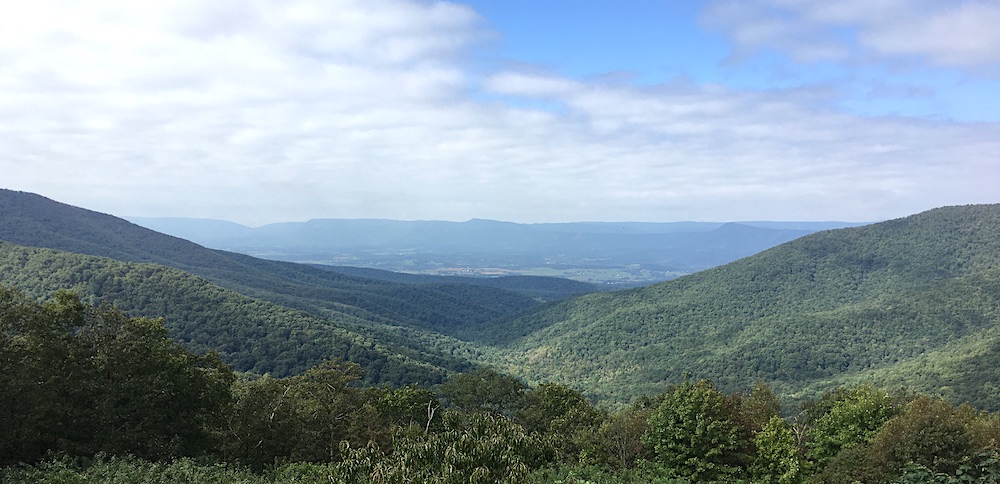
For waterfalls and beautiful mountain views, Shenandoah National Park is hard to beat. Only 75 miles from Washington, D.C., the park is easy to access from most of the East Coast and offers solitude in the Appalachian Mountains. With over 200,000 acres of protected land to explore, there is something for everyone in Shenandoah.
There are over 500 miles of hiking trails within the park, making Shenandoah National Park a hikers paradise. Waterfalls are abundant throughout the park, and most are accessible from short trails off of Skyline Drive, the main road through the park. Over 100 miles of the Appalachian Trail passes through the park, so be sure to keep an eye out for the many thru-hikers that are on the trail.
Shenandoah National Park Visitor Info
The park is accessible only from the 105-mile long Skyline Drive. This scenic drive features beautiful vistas from the many overlooks along the road. With a speed limit of 35 miles per hour, a drive along Skyline is all about slowing down. Be sure to watch for wildlife such as deer, black bears, wild turkeys, and more as you explore this scenic area.
The best times to visit Shenandoah National Park are spring and fall. Wildflowers are in bloom during the spring months, and the park is well known for fall foliage. Nearly all park facilities close during the winter months. Facilities are generally open from late-March through November. Skyline Drive is the only public road in the park, and it is open year-round, although it does close often during the winter due to inclement weather.
Weather in Shenandoah National Park can vary by as much as 10 degrees from the valley to the mountains. Be sure to check the weather forecast before your visit and dress in layers. Winters are cold, with snow and ice occurring regularly. Winter months are a great time to take in the scenic views. Summer months can be humid and hot with frequent rain.
Camping is available in the park in both developed campgrounds and the backcountry. Mathews Arm, Big Meadows, and Loft Mountain campgrounds are RV friendly. Campground reservations can be made online at recreation.gov up to six months in advance.
WiFi is available at several locations within the park, and cell coverage varies throughout the park boundaries.
3. Great Smoky Mountains National Park
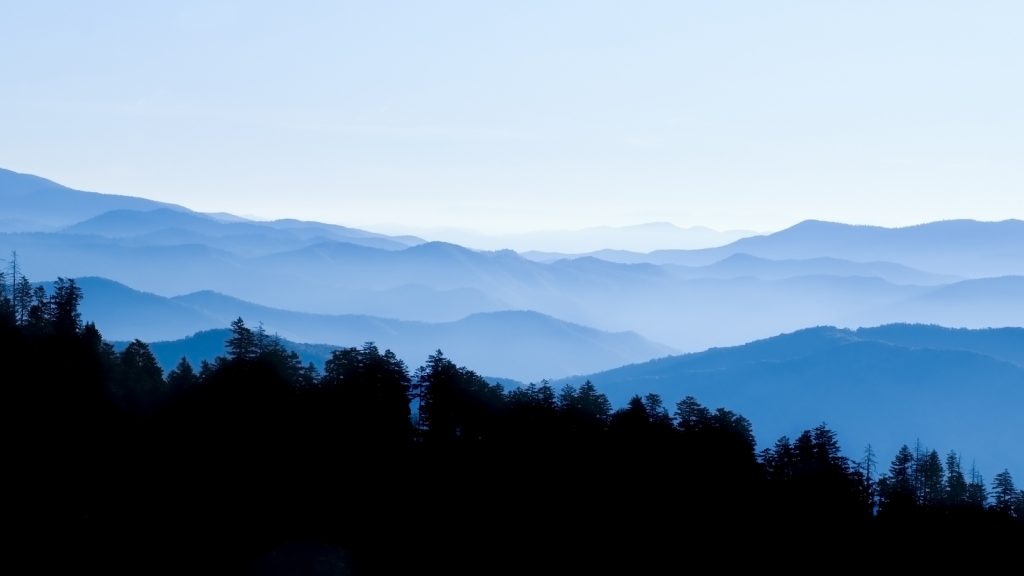
Located along the border of North Carolina and Tennessee is the nation’s most visited national park. Great Smoky Mountains National Park is primarily known for its plant and animal life, stunning views, and history. This park is popular with visitors year-round and offers hiking, biking, fishing, beautiful drives, and horseback riding.
Smoky Mountains National Park is home to a wide variety of wildlife, including white-tailed deer, black bears, coyotes, and more. The park also has a rich history. The Cherokee Indians were the original inhabitants in the area, and their history is celebrated in the nearby town of Cherokee, North Carolina. Within the park, historic buildings from the early 1800s have been preserved and are open for viewing.
Biking is popular throughout the park. Every Saturday and Wednesday morning, the historic Cade’s Cove area is closed to motor vehicles until 10:00 a.m. The closure allows bicyclists and walkers a chance to explore the area without traffic.
From Rainbow Falls to Chimney Tops, the hikes within the park do not disappoint! There are trails for all ability levels, and each path has something different to see. Some trails offer excellent views, while others meander through old-growth forests or lead to waterfalls. Check out the park trail map in advance or ask a ranger for trail recommendations based on your interests.
The park offers fantastic ranger programs throughout the year with something for everyone. In addition to the usual ranger talks on plants and wildlife, you can also attend historic mill demonstrations and lectures on Smoky Mountain Traditions and Tales. Along with the National Park Junior Ranger program, the park has a unique “Not-So-Junior” Ranger Program for folks from 13 to 130.
Great Smoky Mountains National Park Visitor Info
While the park is busy year-round, summer and fall are the busiest times of the year. Temperatures within the Smokies can vary by as much as 10-20 degrees. The park experiences all four seasons, and visitors need to be sure to check the weather in advance of their visit.
There are ten developed campgrounds within the park, along with horse camps and backcountry camping. Nine of the campgrounds can accommodate RVs. Be sure to check the length restrictions at each campground before booking. There are no hookups or showers at the park campgrounds. Campground reservations can be made up to six months in advance online at recreation.gov.
There is no public WiFi in Great Smoky Mountains National Park, and cell service varies throughout the park.
4. Congaree National Park
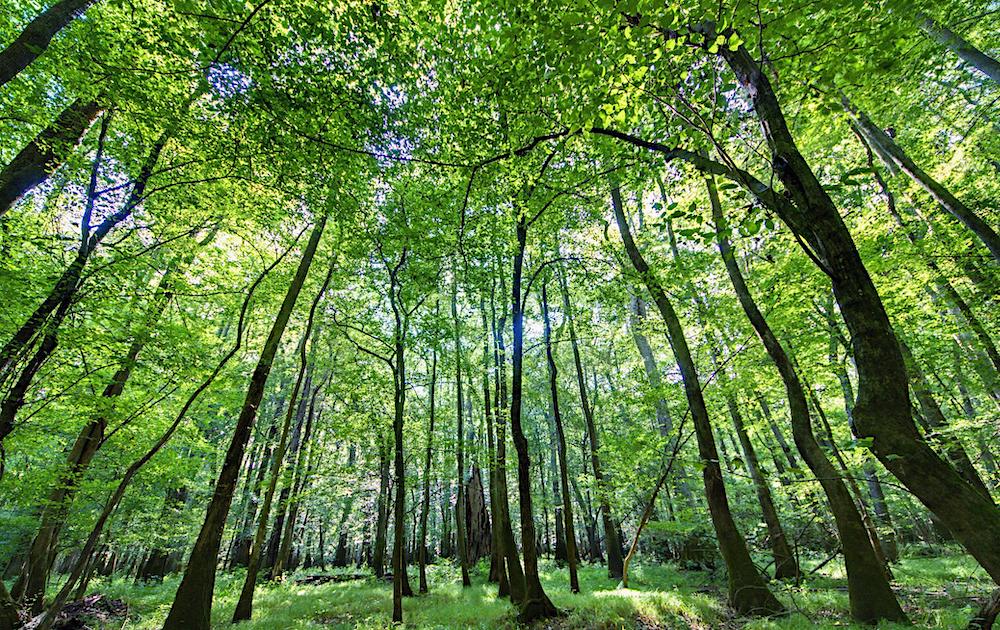
One of the nation’s newest national parks is located in South Carolina. New as it may be, it’s one of the best national parks on the East Coast!
Established in 2003, Congaree National Park is home to the largest intact area of old-growth bottomland hardwood forest in the southeast. The land that makes up Congaree was saved from logging during the last century.
Popular activities in Congaree National Park include canoeing, kayaking, fishing, hiking, and camping. The Congaree and Wateree Rivers flow through the park, supporting the ecosystem and providing opportunities for adventure. Exploring the park by canoeing or kayaking is a great way to see the old-growth forest of Congaree, home to some of the tallest trees in the eastern United States. You can take a quick paddle or an overnight trip along the waterways.
The Cedar Creek Canoe Trail is a 15-mile long trail that leads to the Congaree River. If you plan to canoe or kayak, you can bring your own equipment or take a guided tour. Outfitters in Columbia, South Carolina, can get you ready for your adventure. Check with the National Park Service about ranger-led canoe tours offered throughout the year.
Hiking is a fantastic way to view the 26,000 protected acres of Congaree National Park. One of the most popular trails in the park is the Boardwalk Loop Trail. This 2.4-mile boardwalk trail is stroller and handicap accessible. Along the boardwalk, you will pass tree species, including bald cypress, tupelo, loblolly pines, oaks, maples, and holly. Other trails range from less than half a mile to over 10 miles into the backcountry.
Congaree National Park Visitor Info
Congaree National Park has mild winters and hot, wet summers. Mosquitos are right at home in the park, so be sure to bring repellent anytime you visit, especially in the summer. Spring and fall are the best times of year to visit the park, with mild temperatures and fewer insects. Hiking and canoeing are popular year-round, although flooding is most common in the winter. Flooding can occur with little warning, so be sure to check water levels before setting out on your adventures.
There are two front country campgrounds in Congaree National Park, and backcountry camping is allowed by permit. Campsites must be reserved in advance through recreation.gov. You cannot pay in person or “walk up” for camping, so be sure to plan your stay in advance.
Rangers can help you plan your camping if you are hiking or paddling into the backcountry. Congaree does not accommodate RVs or trailers. There are several South Carolina State Parks nearby that provide RV camping, with Poinsett State Park being the closest.
Much of Congaree National Park does not have cell service, so be sure to plan accordingly. Let someone know where you will be hiking or canoeing and check in with them before and after your trip. Public WiFi is available in the park at the Harry Hampton Visitor Center.
5. Mammoth Cave National Park
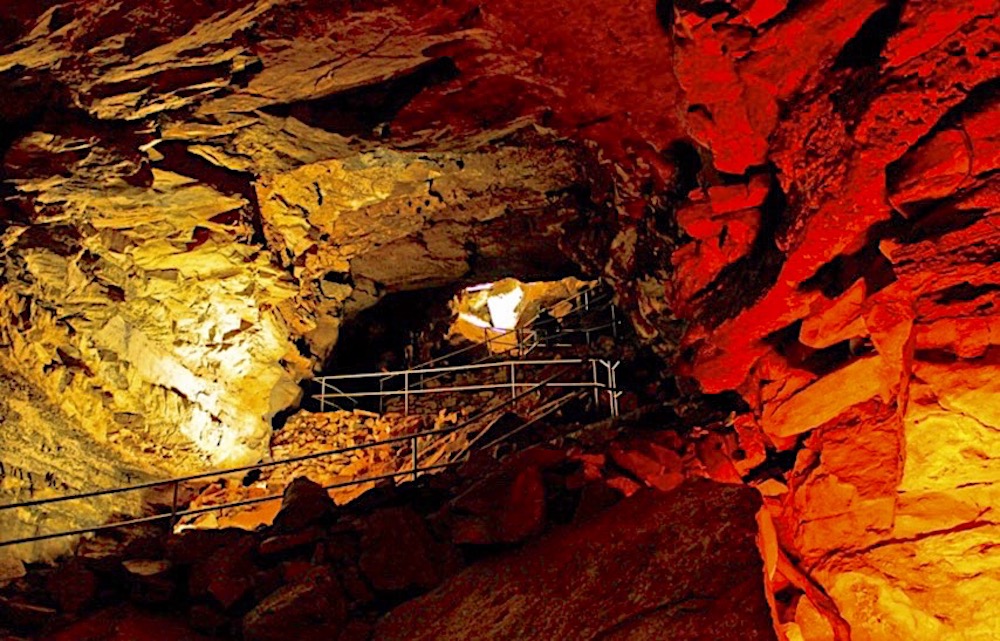
Mammoth Cave National Park in Kentucky is home to the world’s longest known cave system. This is definitely one of the coolest best national parks on the east coast.
Early guide Stephen Bishop called it a “grand, gloomy and peculiar place.” Over 400 miles of the cave have been explored. A variety of cave tours take visitors to unique points of interest within the cave system.
Humans have used Mammoth Cave for thousands of years. Evidence of human activity, including the remains of an underground tuberculosis hut from the 1800s, can be seen in the cave. Cave features include massive domes, narrow slot canyons, tubular passageways, stalactites, stalagmites, and more.
There are over a dozen different tours that you can take through Mammoth Cave. Each tour has a different theme and takes you to a separate area of the cave complex. There is a wheelchair-accessible tour as well as a ¼ mile tour that is great for people with difficulty walking long distances. Many of the other tours are strenuous, with multiple flights of stairs that navigate along steep inclines. The most extended tour lasts four hours and covers nearly four miles inside the cave!
Mammoth Cave National Park Visitor Information
Tickets are required to enter the cave, and prices vary for the cave tours. Reservations are recommended as cave tours regularly sell out. For the best experience, check out the tours in advance on the Mammoth Cave website and book the ones that are best for your group.
Above ground, there is much to explore. There are a variety of surface walks and ranger programs that are free of charge. Be sure to check the programming schedule when you arrive at Mammoth.
The Green and Nolin Rivers wind their way through the park and are perfect for boating, canoeing, kayaking, fishing, and swimming. Local outfitters can provide you with the correct gear that you need for these activities.
The park has three developed campgrounds along with backcountry sites. RVs are welcome at Mammoth Cave Campground. Half of the campsites are first come first served, and the other half can be reserved. Campground reservations can be made up to six months in advance online at recreation.gov.
Mammoth Cave National Park is located in southern Kentucky. This region has a warm, moist climate with frequent rain. Summer temperatures average in the high 80s and winter averages are in the low 40s. The temperature in the cave is a constant 54 degrees, so bring a jacket no matter which time of year you visit the park.
Cell service is available with some carriers throughout most of Mammoth National Park, although there are some dead zones within the park. And WiFi is accessible at several locations in the park.
6. Biscayne National Park
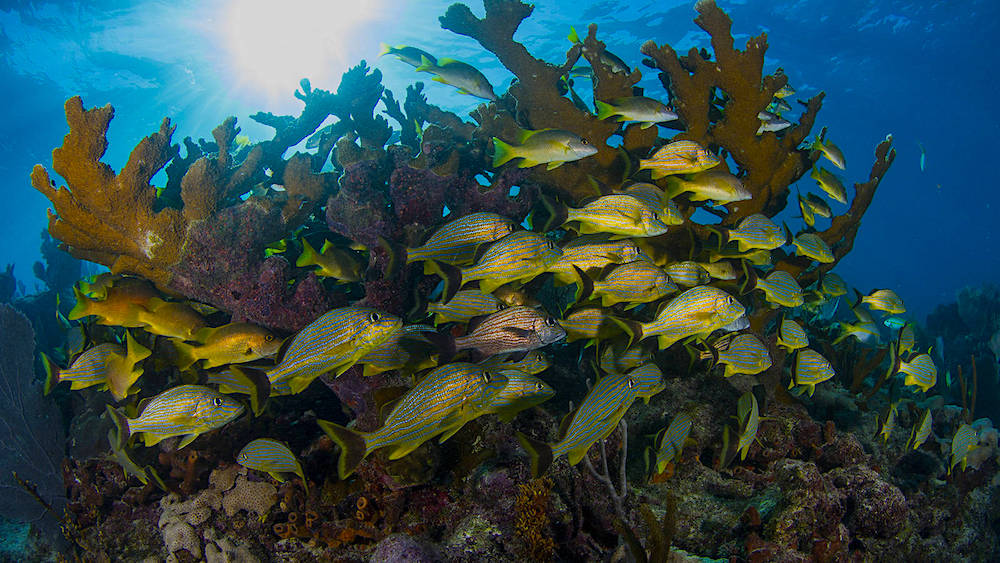
For a tropical getaway on crystal clear water, head to Biscayne National Park. A visit to the park gives you a chance to explore coral reefs and undeveloped Florida keys. This is the best national park on the East Coast for those who love marine environments!
Located just outside of Miami, the park is close to a large city but feels miles away from civilization. Ninety-five percent of the park is water, so you will need some type of watercraft to explore the park. Outfitters can provide everything from boats to kayaks and paddleboards, or you can bring your own.
Popular activities in the park include paddling, boating, fishing, snorkeling, diving and relaxing on the beaches. Along the shore, there are coral reefs and even shipwrecks to explore. The Biscayne Birding Trail is popular with birders. It even has a certificate program to reward birders for identifying native park birds.
Biscayne National Park Visitor Info
The Biscayne National Park Institute and several other outfitters offer eco-adventures within the park. Guided snorkeling, paddling, and day and evening cruises are all available for a fee.
If you are traveling with children, plan your visit to include the park’s Family Fun Fest program. Free, hands-on activities for all ages make this program a must for kids. The Fun Fest is held on the second Sunday of each month from December through April.
With year-round sunshine and mild winters, Biscayne National Park is a great place to visit at any time of the year. Summer can be humid and with afternoon thunderstorms. Hurricane season lasts from June to November. In spite of this, summer is still a great time to visit the park.
There are two first-come, first-served campgrounds in the park. Both are located on islands and only accessible by boat. Restrooms are available in the campgrounds. There are no showers, and you will need to bring your own water.
WiFi is available at the visitor center. Cell service is available in some areas of the park, but areas without coverage exist throughout the park.
7. Everglades National Park
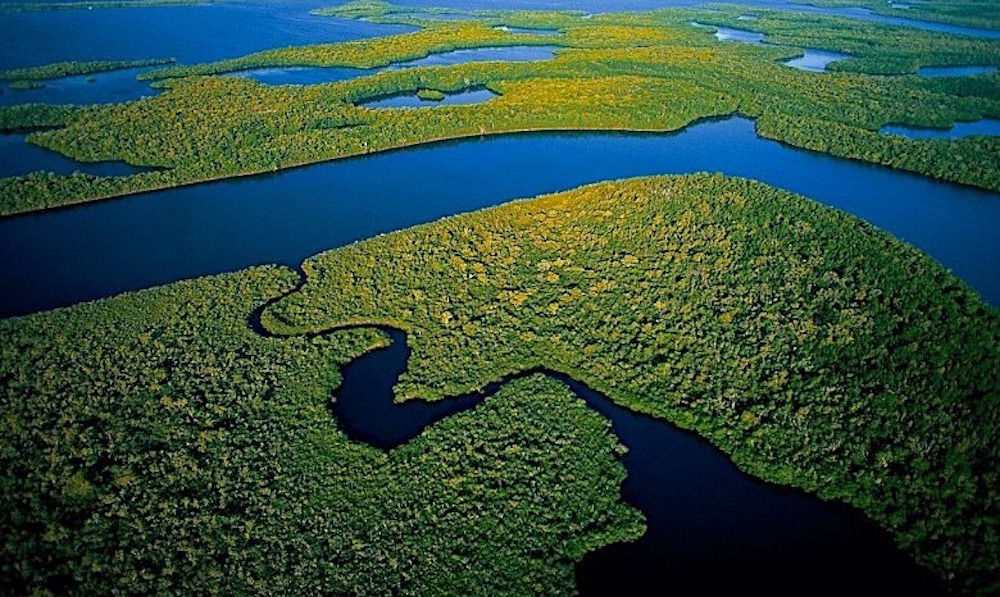
One of the largest and best national parks on the east coast, Everglades National Park, spans 1.5 million acres in southern Florida. The park includes a variety of ecosystems, from freshwater sloughs to pinelands, cypress, and mangrove forests. Most visitors come to the Everglades to catch a glimpse of the alligators and crocodiles that inhabit the region. There are many places in the park to spot these predators, both on land and water.
Popular activities in the Everglades include hiking, canoeing and kayaking, biking, bird watching, and geocaching. Adventurous visitors may enjoy slough slogging- an off-trail hike through the water in a cypress forest. Park rangers guide small groups of visitors through the marsh each day during the dry season.
Visitors will want to take an airboat tour through the Florida Bay. This classic Everglades experience provides an excellent opportunity to view the crocodiles, manatees, and dolphins that inhabit the bay. Three authorized airboat businesses operate within the park. If you are interested in taking an airboat tour, be sure to book a reservation in advance to guarantee a spot.
To catch a glimpse of wildlife on land, check out one of the many hiking trails in the park. The famous Anhinga Trail is a great place to view alligators, turtles, and birds, including the anhingas that make their home in the area.
A trip to Shark Valley is another excellent way to spot alligators and other wildlife. Visitors can climb the observation tower to take in amazing views of the “True Everglades.” A tram tour is also available, in addition to hiking and biking trails.
Everglades National Park Visitor Info
With its location in a tropical climate, the weather is an essential factor when planning your visit to the Everglades. There are two seasons in the Everglades: the dry season and wet season. The dry season lasts from November to March, and the wet season lasts from April to November.
The dry season is the busiest in the park due to the excellent weather conditions. Wading birds and their predators also call the Everglades home during the warm winter months. During the wet season, uncomfortable temperatures and clouds of mosquitos make exploring the area difficult.
There are three entrances to the park, and they are not connected. Be sure to plan to make sure that you access the park from the correct entry for what you want to see and do. The northern section of the park is accessible from Miami or Everglades City. To reach the southern section of the park, you will need to go through Homestead.
Both front-country developed campgrounds and backcountry camping are available in the Everglades. During the wet season, camping can be uncomfortable at best, so plan accordingly. Two drive-in campgrounds can accommodate RVs and tent campers. Both campgrounds are accessible from the Homestead entrance of the park.
Cell coverage is available through much of the park, but there are areas without coverage.
8. Dry Tortugas National Park
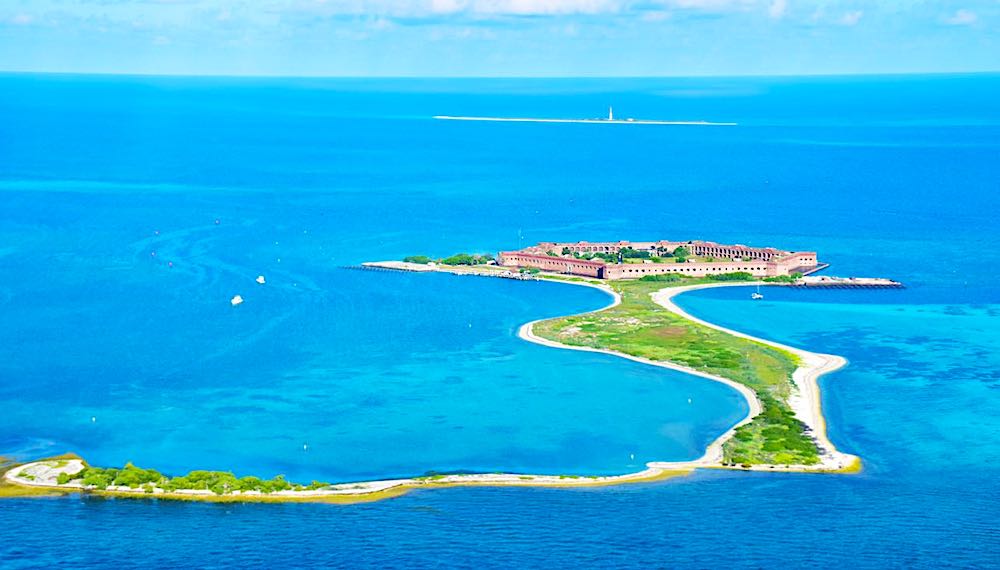
If you are looking to experience the tropics in the United States, plan a trip to Dry Tortugas National Park. It’s located about 70 miles west of Key West, and Dry Tortugas is accessible only by boat or seaplane. Most of the park is water, with seven islands making up the Dry Tortugas. Palm trees, white sand, and coral reefs abound, making Dry Tortugas an excellent place for snorkeling, swimming, and boating.
Whether you take a day trip or decide to camp overnight, visitors must first check-in at Garden Key. This 14-acre island is home to Fort Jefferson, a 19th-century brick fort. The visitor center, campground, and restroom are all located on Garden Key.
Since most of Dry Tortugas is water, snorkeling is an excellent way to explore the park. Coral reefs, shipwrecks, and pier pilings are all located close to shore, allowing visitors to check out a wide variety of underwater habitats. Sea turtles are commonly found in the park along with lobsters, octopus, and tropical reef fish.
Swimming, kayaking, and paddleboarding are other great ways to enjoy the park. Fishing is permitted offshore and along Garden Key at several locations.
Dry Tortugas is in a subtropical climate region. The weather is usually warm and humid throughout the year, although it is less humid and drier in the winter months. From December to March, winter storms can come through creating rough seas and windy conditions. Hurricane season lasts from June to November.
Dry Tortugas National Park Visitor Info
The biggest hurdle to visiting Dry Tortugas is getting there. From Key West, you can take a ferry, seaplane, or charter to reach the park. You can also bring your own boat. No matter how you choose to get to Dry Tortugas, you will need to book your trip well in advance. Reservations for many of the tour companies can be made up to a year ahead of time.
Camping is permitted in Dry Tortugas, although the number of campers allowed each night is minimal. Campers will need to take the Yankee Freedom Ferry. Reservations are required and need to be made well in advance.
The camping at Garden Key is primitive, with bathrooms but no drinking water. You will need to come prepared with all of the food and water that you will need during your stay. Wheelbarrows are provided to help you with your gear.
How to Save Money and Get the Most out of Visiting the Best National Parks on the East Coast
Every national parks lover should have the America the Beautiful National Parks Annual Pass.
This pass waives daily entry fees into all National Parks and Federally Managed Lands across the US for only one low cost a year. If you paid daily entry fees to every National Park, you’d spend hundreds of dollars.
This annual pass can be purchased online or at your nearest National Park for less than $100 and grants free entry into over 2,000 National Parks and recreation areas.
Make Your East Coast National Park Trips Interactive with a Passport Book
Did you know the National Park Service sells National Park passport books?
If you’ve ever been in a national park visitor center and seen strange round stamps, now you know why.
National park passport books contain pages for stamps from each park visitor center. Every park is unique and has many kinds of stamps. This becomes a fun game to play to see how fast you can fill up your passport book while learning all about the parks in the meantime!
Many types of passport books are available, from those for the rugged traveler to the junior national park visitor, and more.
You can snag a National Parks Passport book online or at your nearest national park visitor center.
Wrapping Up the Best National Parks on the East Coast
Exploring the best national parks of the East Coast will keep you busy for ages! There is a park to explore, no matter which time of year you are looking for an adventure.

